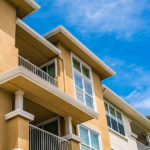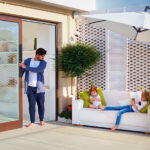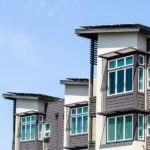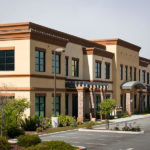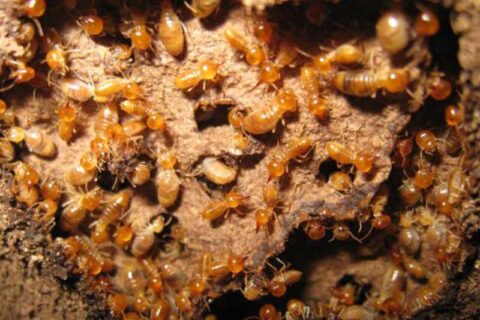Where do Termites Live?
Termites do a great deal of damage every year in the United States. The damage done by termites costs homeowners and business owners about five billion dollars annually. Termite activity has been reported in every state except Alaska, and they are active in states with mild temperatures all year round. They aren’t the kind of creatures you want in your home, but if your home is protected against termite infestation and you can study them from a distance, they are actually very interesting insects.
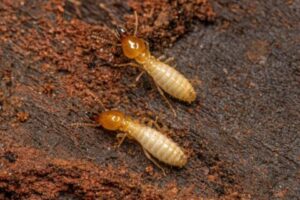
Where do termites live? They can thrive just about anywhere, and they are found all over the world; they’re on every continent except Antarctica. Of the 2,600 species of termites worldwide, 10 are found in Europe, 50 in North America, and Africa, and over 1,000 species of termites flourish. In fact, in Africa, termite colonies live in mounds as high as 17 feet, and these mounds are such wonders of engineering that they’ve been studied by architects to inform the construction of energy efficient buildings.
While they can live in a variety of habitats, termites prefer warm or humid climates, depending on the species of termite. That is why, in the United States, they are most active in the South, Southeast, West and Southwest. Some live in soil, and some in dry wood, but the ideal environment is one that allows them access to cellulose. Cellulose is found in wood, plants, and plant-based materials, and it is the primary food source for termites. For termites, wood damage is the result of their quest for the cellulose inside the wood.
In the United States, several species cause property damage. These include subterranean, Formosan, Drywood, and
Dampwood termites. Subterranean and Formosan termite nests are built underground, while Drywood termites build their colonies in dry wood, and Dampwood termites, as the name suggests, live in damp or saturated and rotting wood. Termites that live underground must use mud tubes to travel outside of their colonies because exposure to the air can be fatal. Termites’ soft bodies require moisture, and being exposed to sunlight and outdoor air can cause that moisture to evaporate. Subterranean termites are attracted to sources of humidity in the home, such as leaky faucets or plumbing, and Drywood termites nest deep inside trees and wood structures. When you are looking for signs of termites, you are unlikely to see the insects themselves.
There is an exception, and sometimes you will see termites, but these will generally be winged termites. Also called alates or swarmers, these flying termites are not a separate species, but rather a caste within a termite colony. Termites have a very intricate social system, with colonies established by a king and queen, who produce offspring that become workers, soldiers, or alates. Flying termites evolve when the colony matures, and they are young reproductive termites. When the weather conditions and temperature signal the beginning of the mating season, also called a swarming season, the winged termites leave the colonies and fly away to find mates. Once they pair off, they drop their wings and begin a new colony.
Knowing these facts about how and where termites live can give you insight into the signs of termites in your own home. For instance, if you see swarming termites, you know there is a mature termite colony nearby. If you see wings on your window sills or near your doors, this is an indication that termites have chosen a spot on your property to start a new colony.
Mud tubes on the inside or outside of your home indicate an infestation of Subterranean termites. Other signs of a termite infestation include blistering paint, damaged wood paneling or trim, hollow sounding wood, or pinholes. As mentioned, wood is a good source of cellulose, but cellulose is also found in the paper facing of drywall, which makes termites dangerous not only to the structure within your home but also to the walls.
Bathrooms are popular places for termites to congregate, and if you consider termite habits, it makes sense. The bathroom has all the elements necessary for termites to thrive: wood, warmth, and moisture. Even without leaks, a bathroom stays humid because of daily baths and showers, and the interior framing of a bathroom is generally made of wood.
Drywood termites don’t need the moisture and soil necessary to Subterranean termites, so they will infest any wooden item in your home. From the wooden framework that supports the house to the wooden furniture used inside it to the cabinets, drywood termites can find plenty to eat in your home. Built-in cabinets, door and window frames, exposed beams, wood paneling, and baseboards are also fair game for drywood termites.
While mud tubes are the hallmark of a Subterranean termite infestation, you won’t find these if your problem is Drywood termites. Instead, you might notice pin holes in the wood, or termite droppings, known as frass. These droppings look something like sawdust or like sand or pepper that has been spilled and can be found under furniture, inside drawers, and on horizontal surfaces.
Don’t wait for signs of a termite infestation, however, to call in the professionals. Once a homeowner notices these signs, there is often already significant damage to the house. If you do not already have termite control measures in place, call for a termite inspection. Once your home has been checked thoroughly by an inspector, termite treatment will be recommended, to eradicate any existing termite infestation and protect your home from future termite activity.
When you need termite inspection or treatment, call the termite control professionals at MightyMite Termite Services. At MightyMite, we’ve earned a reputation as experts in California termite control. We perform termite inspections to ensure that your home is free of termites and work hard to help you keep it that way, using treatments that are naturally derived and have a low impact on the environment. We diagnose and treat infestations with the most effective methods and unmatched warranties, solving your termite problems the first time, with an industry best “no call-back rate.” That, combined with our experience, technology, and highly trained professional staff, makes us the leading extermination company in the Bay Area. We understand that your home is your most important investment, so we work hard to provide excellent service, utilizing best practices to solve our customers’ termite problems. For more information, email Info@mightymitetermite.com, call us today at 408.335.7053, or contact us through our website.

